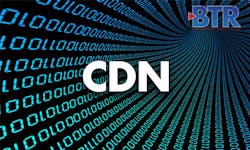Cedexis has discovered that its technology, normally used to balance traffic among content delivery networks (CDNs) and the cloud, is being used by CDNs to compare their performance against competitors. The stack of measurements provided by Cedexis can be used to create context and benchmark service.
"We are at a point in the development of the CDN industry where they are all pretty good. We don't have CDNs in the western world that are up less than 97% of the time, so they have to look for comparative goodness," said Simon Jones, product evangelist, Cedexis.
Cedexis tracks experience measurements, such as throughput, latency, video start times, buffering ratios and delivered bitrates. The CDNs are building custom algorithms.
"I've got this many CDNs that can be used. I will strike off the list those that are not currently available. Here are my thresholds on latency and throughput," Jones said.
The CDN companies can utilize Cedexis' Radar Community, a free service, to run their own reports. They can compare all of the CDNs in California over the last 24 hours based on availability and latency, for example. CDNs also can place the Cedexis tag on their website so that customers can look at their own traffic and see if the CDN is delivering as promised.
"This is where it tends to be exciting for people - when they dig in on a time basis," Jones said. On a weekly basis, everything may look good, but across 24 hours there could be variations, and the customer can see the dip.
The third way the Cedexis information is used is in conjunction with data from outside sources, like billing, for example. And, occasionally, CDNs ask Cedexis to partner and provide specific measurements.
"They want to split out data that they can't easily do inside the portal. The portal is a blunt instrument. They ask for specific ways for slicing and dicing when comparing," Jones said.
Radar makes real-user measurements two seconds after a page is fully loaded. To test availability, Radar downloads a first 50-byte object to see if the first download is successful. Next a second identical object is downloaded with an open TCP connection. This measures HTTP response time. The object is cached, and a bigger 100-kilobyte object is downloaded, which measures throughput. (More details at www.cedexis.com/radar/methodology.html)
CDN companies are posting this data on their websites and issuing press releases based on the results. Google Cloud CDN, for example, advertised performance reports on Feb. 28, noting that it demonstrated high performance.
And in March CDNetworks put out a press release noting that it detected a drop in January in its Cedexis ranking for Dynamic Web Application in China. The company noted that it figured out and corrected the problem and had moved back to the top of the list in performance.
"If (a CDN) looks at (Radar) and is not happy, they start thinking about what to do to change their position," Jones said.





